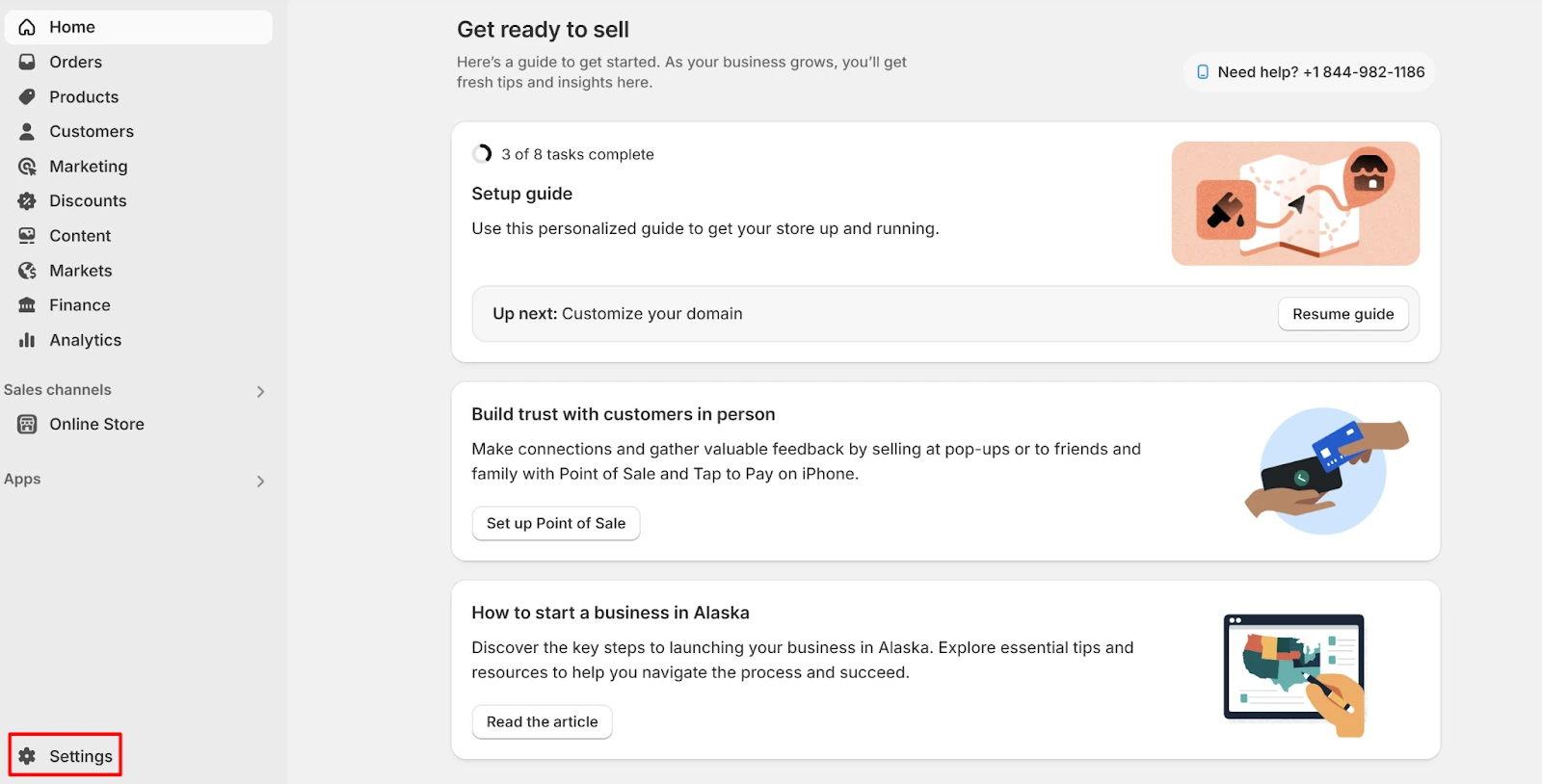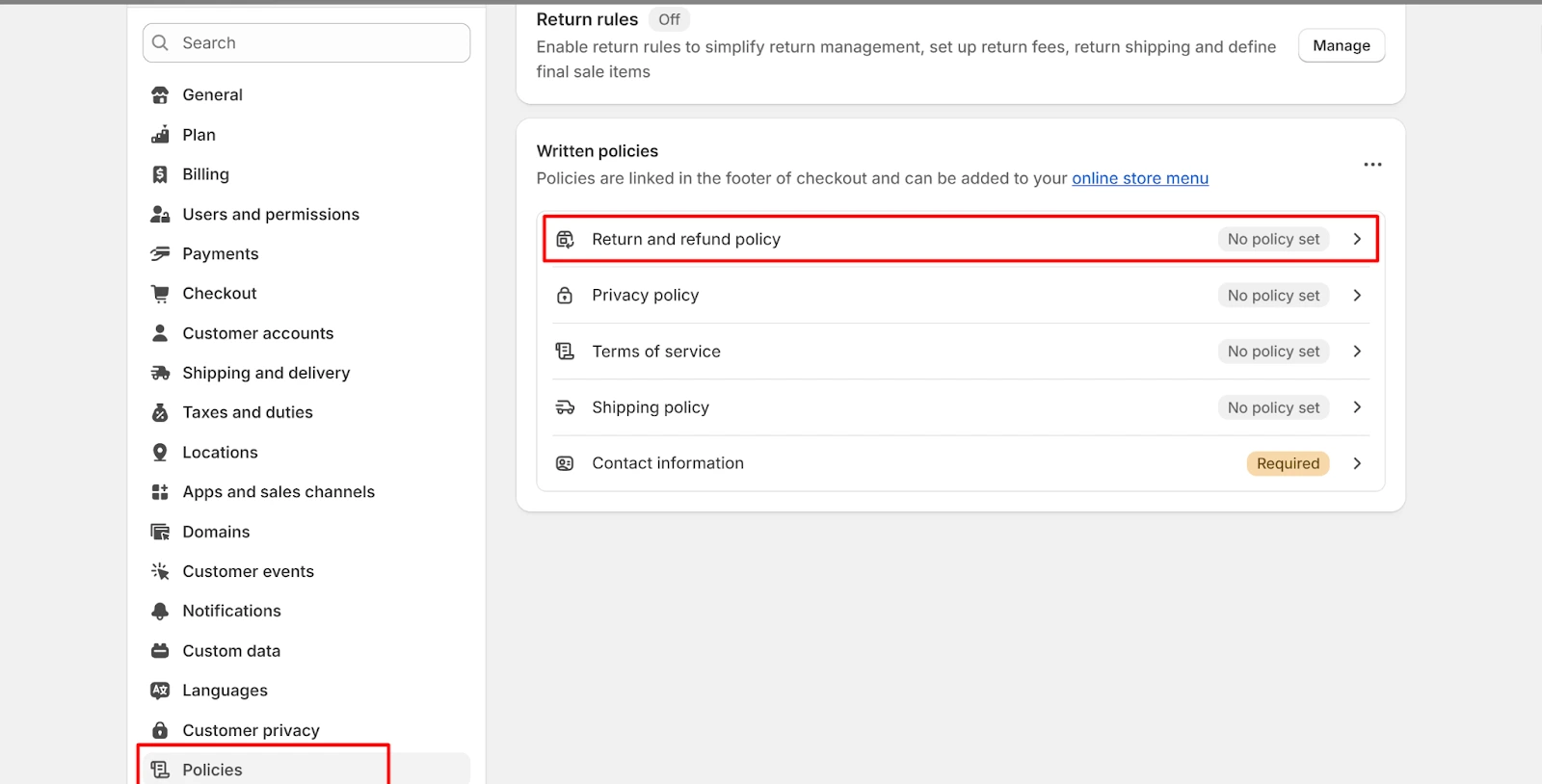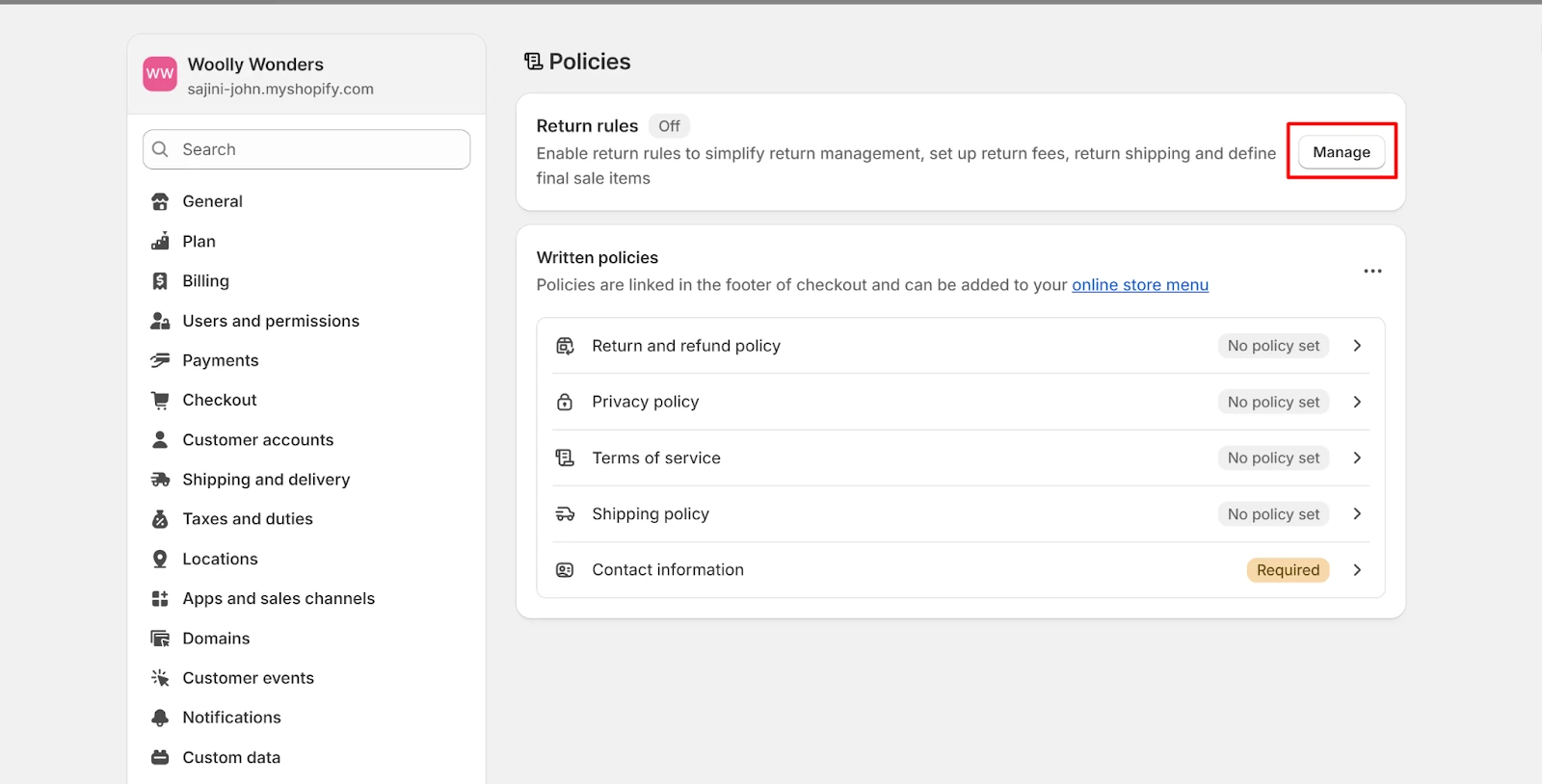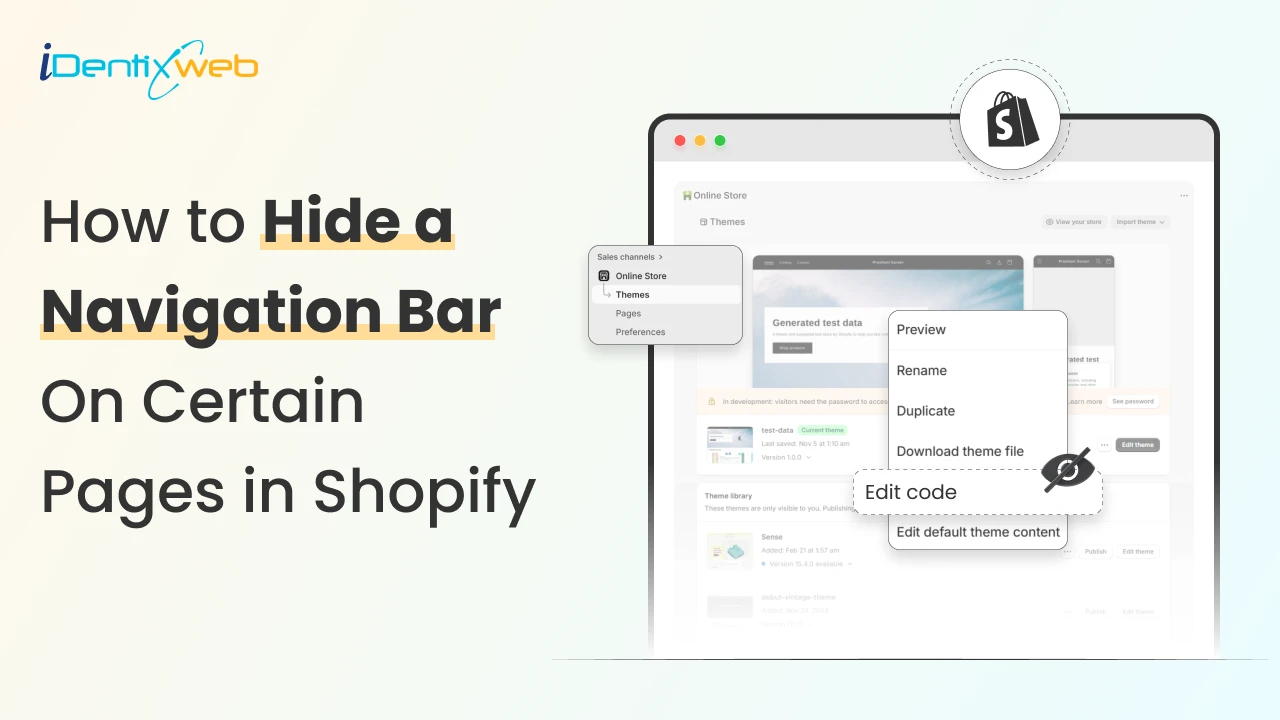
Returns and refunds in online businesses are like two sides of a coin. The reasons behind returns and refunds might be different, such as customers are not satisfied with the product, they received the wrong product, they ordered the wrong size, etc. Alternatively, some buyers order multiple variants of the same product. For example, the same shirt in different sizes, to try the correct size at home. This practice is known as bracketing.
If you are not ready with the proper system for handling these returns and refunds, these requests can waste your time, energy and money with hours spent on responding to customer emails. Like everyone says, for every problem there is a solution, this problem also has one solution. Absolutely, with a clear Shopify return policy, returns in your store can lead to new profits and help you to increase customer loyalty.
What is a return policy?
A return policy is a clearly written guideline provided by a business that explains the conditions under which customers can return purchased products. It outlines important details such as how long customers have to initiate a return, what condition the items must be in, who is responsible for return shipping, and whether customers will receive a refund, exchange, or store credit.
In essence, a return policy sets expectations for both the business and the buyer, helping to create transparency and build trust. For Shopify store owners, having a clear and fair return policy not only protects the business from disputes. It also reassures potential customers, making them more confident in completing their purchase.
Key Elements to Include in Your Shopify Return Policy
When writing your return policy, think of it like answering all the questions a customer might have before they even ask. Here are the key details you’ll want to cover:
Return Window
Let people know the time limit — is it 14 days? 30 days? Being specific here saves everyone from confusion later on.
Item Condition
Ensure your customers are aware of what is acceptable to return. For example, items should be unused, in the original packaging, and still in good condition.
Refund or Exchange Options
Are you offering refunds? Giving Store credit or Exchanges? Spell it out so there are no surprises — clarity here builds trust.
Return Shipping Details
Who's responsible for return shipping — you or the customer? If you offer prepaid return labels, say so. If not, mention that too.
Any Items That Can’t Be Returned?
Be upfront about items that can’t be returned — like final sale items, customized products, or perishables. It’s better to be clear from the start.
How to Start a Return
Give customers simple, step-by-step instructions on how to initiate a return. Whether it’s through email, a return portal, or a form — keep it easy.
Language & Location Support
If you sell in different countries or languages, make sure your return policy is easy to understand for everyone.
Why a Return Policy Matters
A clear and customer-friendly return policy is more than just a formality—it's a vital part of your eCommerce strategy. In online shopping, customers can’t touch, try, or experience a product in person before buying. That uncertainty makes a return policy essential. It helps to increase customers' trust, reduce hesitation, and improve overall customer satisfaction.
A well-crafted return policy shows customers that your brand stands behind its products and values transparency. It can even influence purchase decisions, as many shoppers check return policies before placing an order. Beyond customer trust, it also helps reduce customer service issues, prevent disputes, and streamline operations when returns on Shopify do happen.
For Shopify merchants, a return policy isn’t just about dealing with returned products. It’s about creating a professional, reliable brand experience that leads to repeat business and positive word-of-mouth.
How to Add Return Policy on Shopify
To add return policy on Shopify is very simple if you follow the given steps below and it’s screenshots.
✅ Step 1: Log into your Shopify store.
✅ Step 2: Click on Settings in the lower-left corner.
✅ Step 3: Scroll down and click on Policies option, then click on return and refund policy.
✅ Step 4: Add your return policy. You can write your own or click on “insert template” to start with a basic version of Shopify return policy template (and customize it to fit your brand and products).
✅ Step 5: Once you’ve added your policy, publish it.
✅ Step 6: Make the return rules visible to customers.
How to Create a Shopify Return Policy
Before you can effectively manage returns, the first step is to put your policy in writing. A well-structured Shopify return policy template can help you communicate your process clearly to customers and ensure you’re handling returns consistently rather than making one-off decisions for each case (which can quickly become messy and costly).
While your return policy should reflect the unique nature of your products and fulfillment process, every solid return policy should answer a few key questions:
- Which items are eligible for returns
- What can be exchanged instead of returned
- Which products are considered final sale (and can’t be returned or exchanged)
- The time window customers have to return or exchange items (e.g., 30 days from the purchase date)
- What condition items must be in to qualify for a return (e.g., unused, with tags, in original packaging)
- What the customer will receive in return (e.g., refund, store credit, or exchange for another item)
- How they can start the return or exchange process (e.g., by emailing support or filling out a return form online)
Key Takeaways
Your return policy might seem like a small detail, but it really matters. A clear and honest return policy helps your customers feel more confident when shopping with you. It sets the right expectations, reduces confusion, and shows that you care about their experience, even if something doesn’t work out.
By covering the basics and keeping your tone friendly, you can turn returns into smooth, stress-free moments that actually build trust. And remember, a good return policy isn’t just about handling problems, it’s also a way to keep your customers coming back. If you want to generate a refund policy template, here is a Shopify refund policy generator tool that can make your job easy.
FAQs
1. What is the Shopify return policy?
The Shopify return policy refers to the guidelines a Shopify store sets to explain how customers can return products, under what conditions, and what form of reimbursement they will receive (refund, exchange, or store credit).
2. Why is having a return policy important for my Shopify store?
A clear return policy builds customer trust, reduces pre-purchase hesitation, and improves customer satisfaction. It also helps your team handle returns consistently and reduces the risk of disputes or chargebacks.
3. Can I customize the return policy template?
Absolutely. While Shopify offers a basic return policy template, you should customize it to reflect your specific return terms, product types, and shipping conditions. This makes your return policy clearer and more relevant for your customers.
4. Are returns mandatory for Shopify stores?
No, Shopify doesn’t enforce return policies — it’s up to each store owner. However, offering clear return terms is strongly recommended to stay competitive and provide a better customer experience.









About the author
Sajini Annie John
Meet Sajini, a seasoned technical content writer with a passion for e-commerce and expertise in Shopify. She is committed to helping online businesses to thrive through the power of well-crafted content.